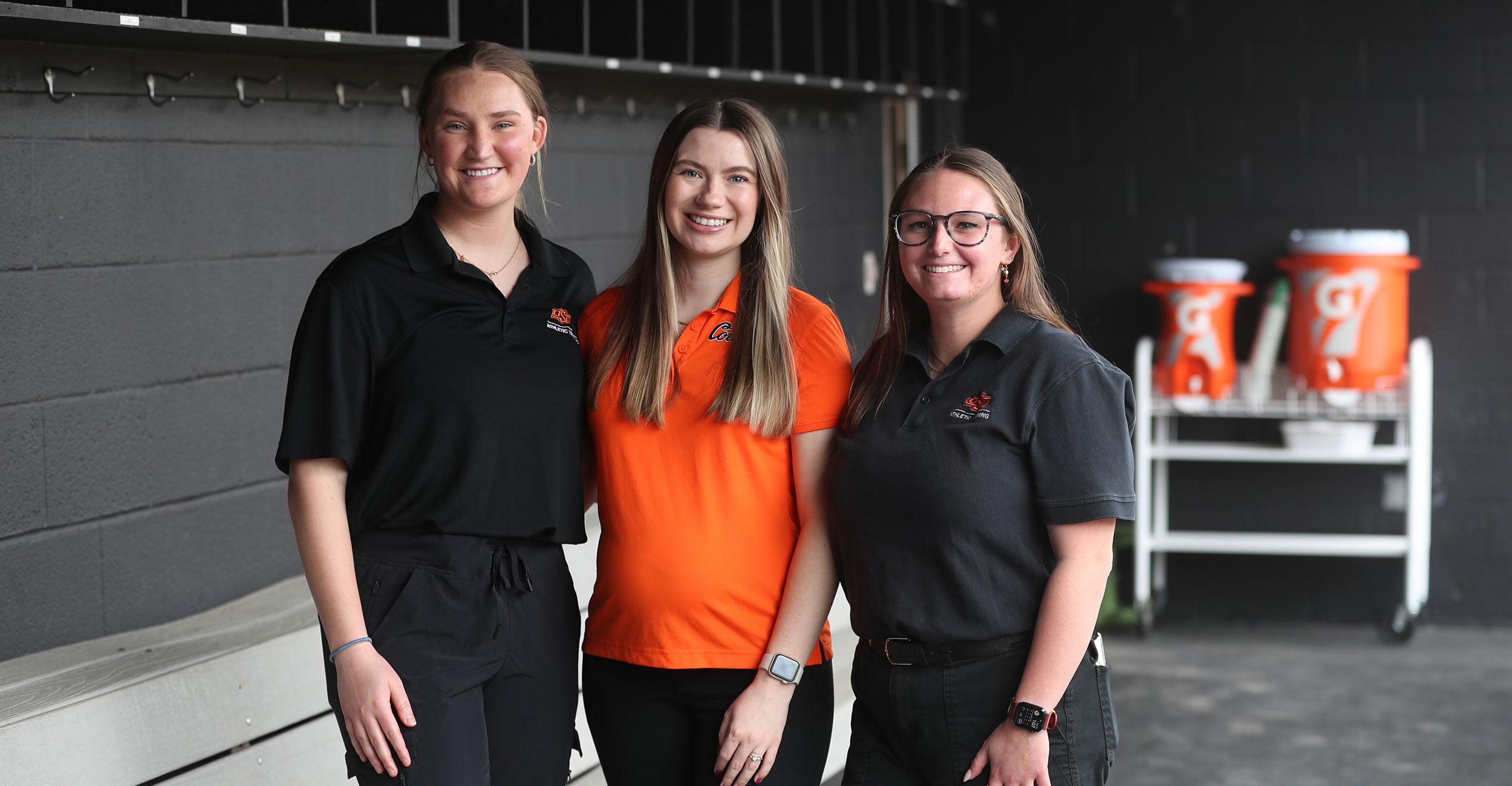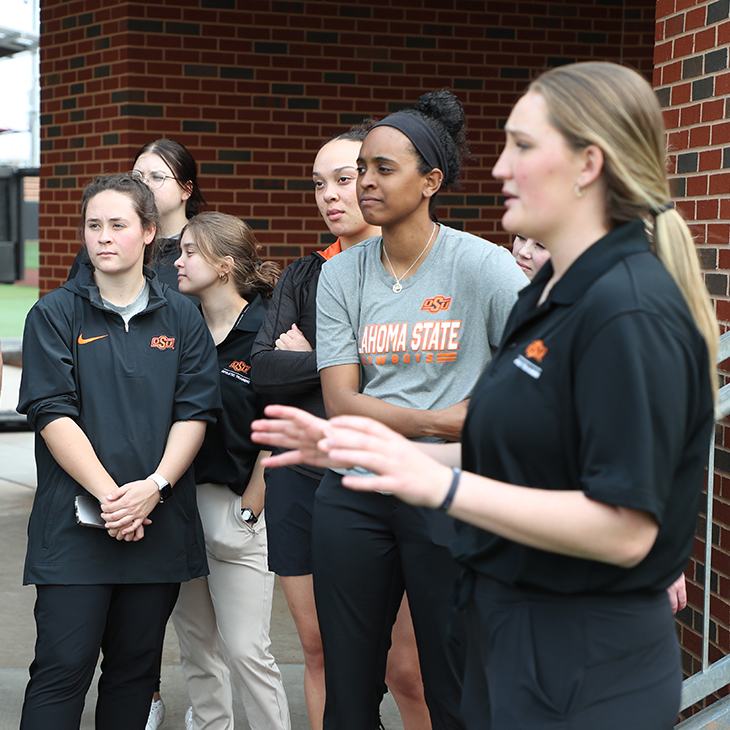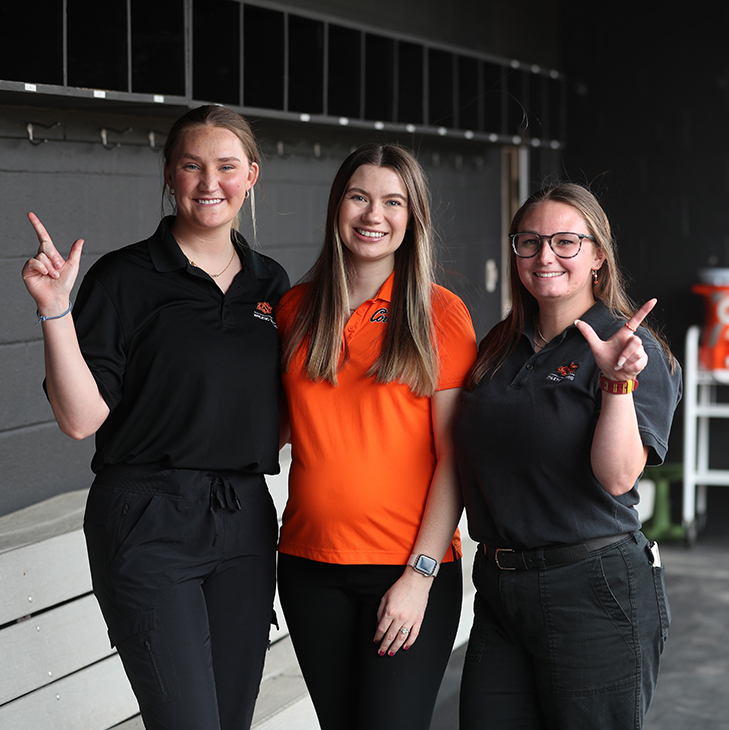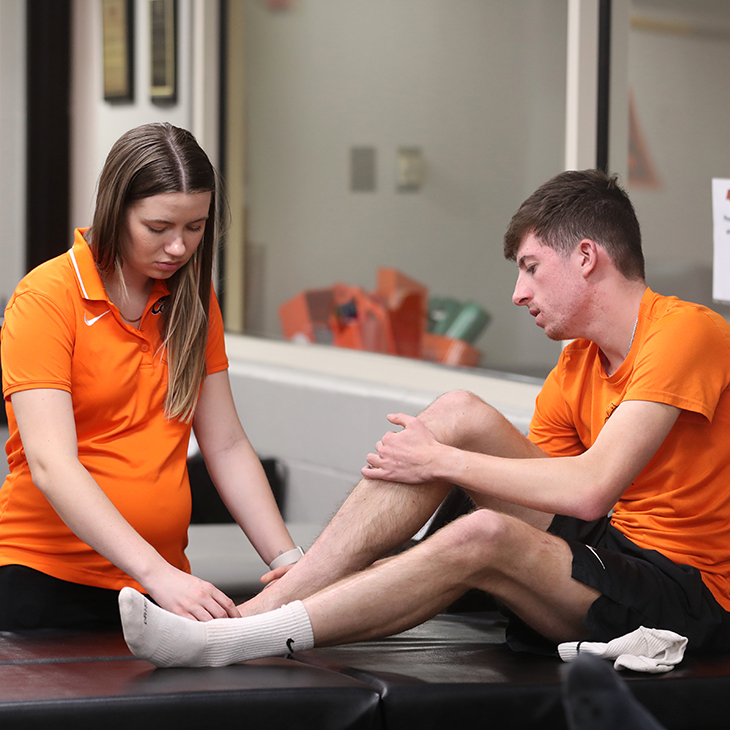
Love of sports leads to career paths for athletic training students
Wednesday, March 13, 2024
Media Contact: Sara Plummer | Communications Coordinator | 918-561-1282 | sara.plummer@okstate.edu
A love of sports is what brought many Oklahoma State University Center for Health Sciences athletic training students to the program and Kaleigh Hanzlick, Tatum Komlodi and Samantha Renson are no exceptions.
All three will graduate from the Master of Athletic Training program in May and are completing their final clinical rotation with OSU Athletics — Hanzlick with baseball, Komlodi with track and field, and Renson with softball.
Hanzlick played sports in high school and then junior college. After two major knee surgeries, she worked with a physical therapist to get better.
“That’s what I thought I would do. I didn’t really know athletic training was a thing. I played basketball and ran track in junior college. I didn’t want to leave sports. I wanted to have an impact on athletes just like I was impacted when I was injured,” she said. “I’m passionate about it. If I can do something to make them a better athlete, it’s what I want to do.”
Renson played softball, soccer and field hockey as well as threw the javelin in track and field.
“I always wanted to go into athletic training, I always wanted athletics in my life,” she said. “I like working with athletes and progressing with their rehab.”
Komlodi got interested in athletic training after taking a sports medicine class in high school and joining the sports medicine club.
“I worked with an athletic trainer in high school and loved it. I thought, ‘This is it,’” she said. “We get to see people at their best and their worst.”
Athletic training students complete five clinical rotations comprising more than 40 weeks of the two-year master’s program.
“You’re there to be a health care provider, not a fan. You’re not a spectator, you’re
a health care professional.”
And while sports may be what inspired them to pursue athletic training, it’s not the only career path. During their five clinical rotations, athletic training students gain real-world experience in high school and collegiate athletic programs, hospitals and clinics, and industrial and commercial settings.
“When I started, I thought for sure I would want to be in high school sports,” Komlodi said. “Now I want to work more in a clinical setting. My orthopedic rotation was my favorite, I loved it. The evaluation of patients and the emergency aspect of it are my favorite.”
Renson still has an affinity for college sports but is also leaning toward a career in industrial athletic training.
“I did a clinical rotation at Whirpool and loved it,” she said, adding that having athletic trainers in settings outside of sports is one way she and others are fighting the stereotypes of her profession. “We’re not physical therapists and we don’t just tape ankles.”
The physical movements of employees at factories or plants are often labor-intensive and repetitive, much like those of athletes, so the principles of athletic training translate to an industrial setting very well.
It’s something many people, including the students themselves, didn’t know until they were in the master’s program.
“I didn’t realize how many settings were out there for athletic trainers. I didn’t know the ones I was going to love and which I wouldn’t until we were doing clinical rotations. I’ve enjoyed the opportunity to explore different areas at different times,” Hanzlick said.
She would like to pursue a career as an athletic trainer with a collegiate or professional team after graduation.
“Professional baseball is my dream. I like to be in the action,” she said, but she advised people who are thinking about pursuing a career in athletic training to get into the profession for the right reasons. “You’re there to be a health care provider, not a fan. You’re not a spectator, you’re a health care professional.”



